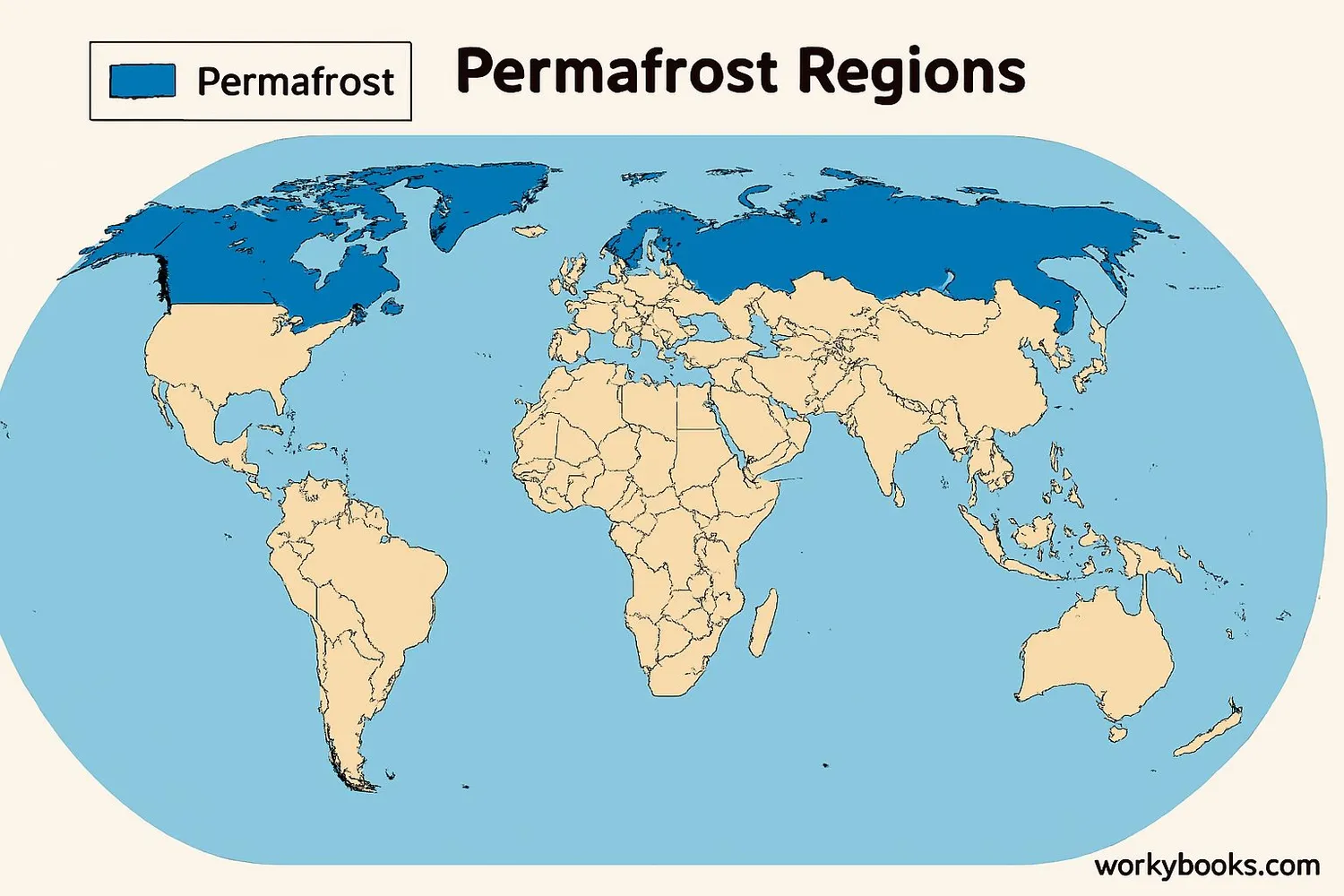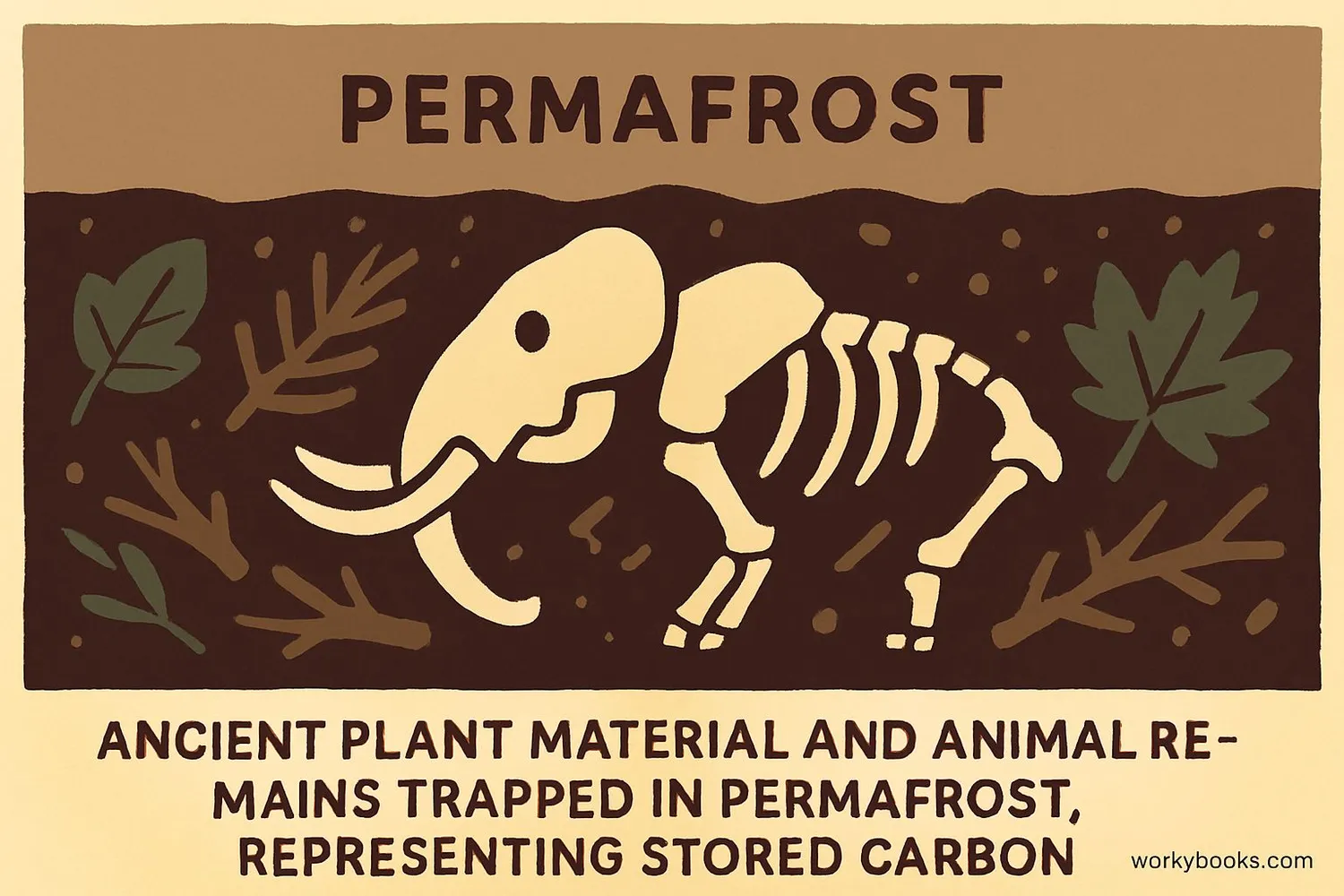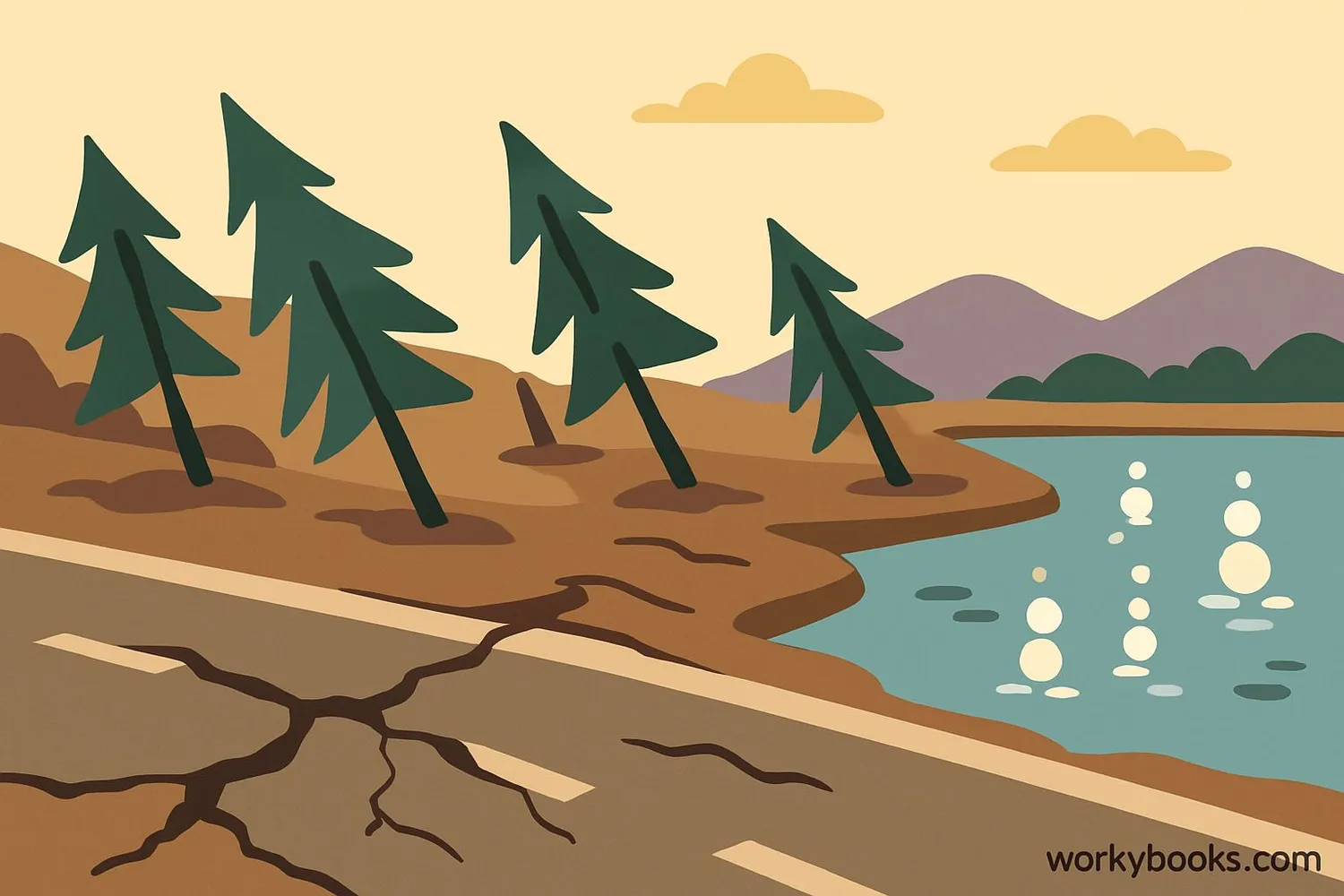Permafrost - Definition, Examples, Quiz, FAQ, Trivia
Discover the science of permanently frozen soil and its importance to our planet
What is Permafrost?

Permafrost is ground that stays completely frozen for at least two years in a row. It's not just frozen soil - it can be soil, rock, or sediment that contains ice and organic material. The name comes from "permanent frost" because it stays frozen year-round.
Permafrost is different from regular frozen ground because it doesn't thaw in the summer. Instead, only the top layer (called the active layer) thaws and refreezes each year. Below that active layer, the ground stays frozen solid.
Permafrost Fact!
Some permafrost in Siberia and Alaska has been frozen for over 700,000 years - that's older than modern humans!
Where is Permafrost Found?

Permafrost covers about 25% of the land in the Northern Hemisphere. Most of it is found in:
Arctic Regions
Alaska, Northern Canada, Greenland, Siberia
High Mountains
Rocky Mountains, Alps, Himalayas
Antarctica
Frozen ground beneath the ice
Permafrost forms where the average air temperature is below freezing (0°C or 32°F). The thickness varies from just a few feet to over 4,900 feet (1,500 meters) deep in parts of Siberia!
The surface above permafrost is often covered by a unique ecosystem called tundra - a cold, treeless landscape with special plants and animals adapted to the harsh conditions.
Depth Record!
The deepest permafrost is found in Siberia, Russia, where it extends over 4,900 feet (1,500 meters) below the surface.
Why Permafrost Matters

Permafrost is like a giant freezer preserving ancient plants and animals. Over thousands of years, dead plants didn't fully decompose because of the cold. Instead, they turned into organic carbon stored in the frozen ground.
Scientists estimate that permafrost contains about 1,500 billion tons of carbon - that's almost twice as much carbon as is currently in the atmosphere! This makes permafrost incredibly important for Earth's climate.
Carbon Storage
Holds vast amounts of ancient plant carbon
Water Regulation
Controls water flow in Arctic ecosystems
Land Stability
Provides foundation for buildings and roads
Permafrost also supports unique ecosystems and helps regulate water flow in northern regions. Indigenous communities have lived on permafrost for thousands of years, building their homes and ways of life around these frozen landscapes.
Thawing Permafrost

As Earth's climate warms, permafrost is thawing at an accelerating rate. This thawing causes significant changes:
Land Changes
Ground sinks, causing "drunken forests" and damaged buildings
Carbon Release
Thawed organic matter decomposes, releasing CO₂ and methane
Methane Emissions
Bubbles of methane rise from thawing lakes
When permafrost thaws, microbes begin decomposing the ancient organic material, releasing carbon dioxide and methane (a powerful greenhouse gas) into the atmosphere. This creates a dangerous cycle: warming causes thawing, which releases gases that cause more warming.
Scientists are concerned because methane emissions from thawing permafrost could significantly accelerate climate change. The changes in soil moisture and landscape also affect Arctic plants and animals.
Methane Alert!
Methane is 25 times more powerful than carbon dioxide at trapping heat in our atmosphere over a 100-year period.
Permafrost Quiz
Test your permafrost knowledge with this quiz! Answer all 5 questions to see how much you've learned.
Frequently Asked Questions
Here are answers to some common questions about permafrost:
Amazing Permafrost Facts
Discover some fascinating information about Earth's frozen ground:
Massive Coverage
Permafrost underlies about 9 million square miles of Earth's surface - that's nearly the size of Africa, the world's second-largest continent!
Ice Age Animals
Thawing permafrost has revealed incredibly well-preserved Ice Age animals, including woolly mammoths, cave lions, and even a 40,000-year-old wolf head!
Ancient Microbes
Scientists have revived microorganisms that were frozen in permafrost for over 30,000 years! These "zombie microbes" help us understand ancient life forms.
Underground Fires
In some Arctic regions, thawing permafrost has led to "zombie fires" that smolder underground through winter and reignite in spring, releasing stored carbon.


